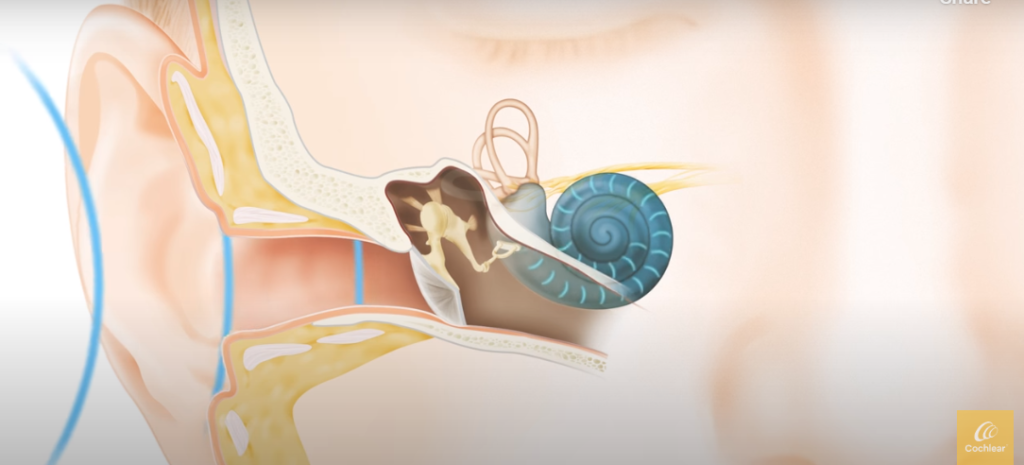If you have hearing loss and experience difficulty understanding conversations, even when wearing high-powered hearing aids in each ear, you may need a different hearing solution. You can consider a bimodal solution — a cochlear implant on one ear with a hearing aid on the other.

A bimodal solution may provide greater sound clarity and improved speech understanding, especially in noise.1 With a bimodal solution, you may also be able to determine where sound is coming from better, have an improved quality of life and enjoy improved satisfaction listening to music than with hearing aids alone.
cochlear implants
Cochlear implants are designed to mimic natural hearing and replace the function of the inner ear (cochlea).

They replace the function of damaged sensory hair cells inside the inner ear to help provide clearer sound than what hearing aids can provide.
A cochlear implant system, like the industry-leading Cochlear™ Nucleus® System, has two parts:
The external sound processor
The implant that is surgically placed under the skin and attached to an electrode array that is placed in the inner ear.
Together, these parts bypass the part of the ear that isn’t working, sending sound straight to the hearing nerve. Watch the video below to learn more about how cochlear implants work.
Types of hearing loss
Single sided deafness
When there is little to no hearing in one ear, but normal hearing in the other ear, it is called single-sided deafness.

Possible causes:
Sudden deafness, acoustic neuroma, birth defects, genetics, head trauma, meniere’s disease, malformation at birth or missing inner ear or cochlea
Conductive hearing loss
Sound cannot travel through the outer or middle ear because of chronic ear infections, draining ears or other factors.
Possible causes:
Microtia and/or Atresia, draining ears, chronic ear infections, previous ear surgeries, chronic mastoiditis or middle ear infections, skin growth or cyst (cholesteatoma), syndromes such as Down, Goldenhar and Treacher Collins
Mixed hearing loss
Refers to a combination of conductive and sensorineural hearing loss. This means there may be damage in both the outer or middle ear and the inner ear.
Possible causes:
Any of the causes of conductive hearing loss plus any of the following: Aging, exposure to loud noise, headtrauma, genetics, meniere’s disease
